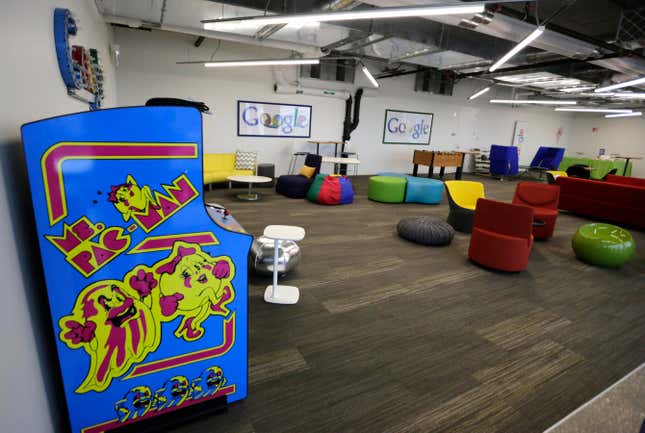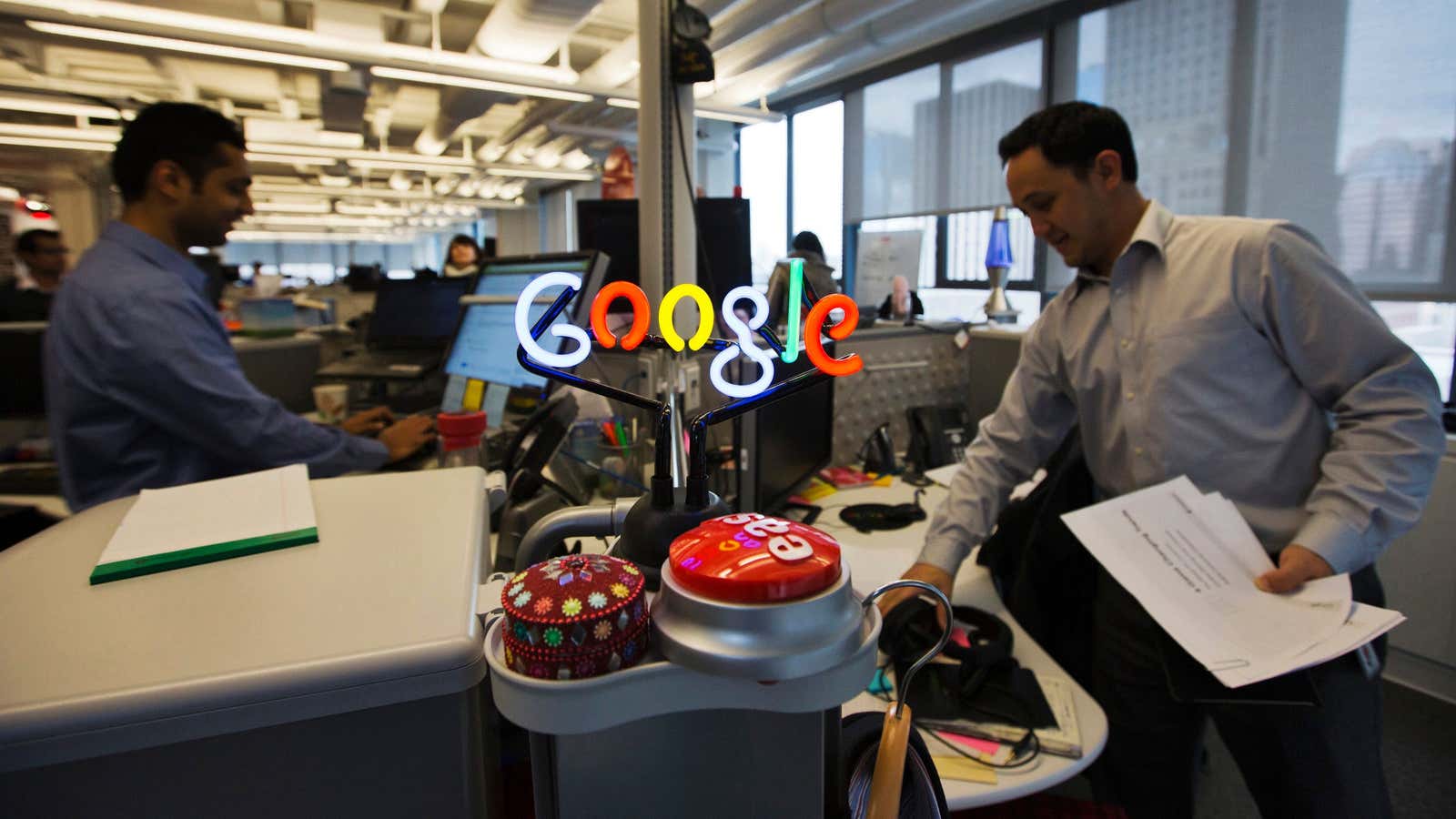Many people wonder why their offices are designed in a certain way. Surely executives must have carefully considered how each option would impact work patterns, and then logically chosen the best option, right? Not really. More likely, their decision was made when they saw a picture like this:

I’m amazed how many CEOs tell me they made a decision to have an open office plan because “The vision Google has for their workplace deeply resonated with me.”
Designing your office by copying Google doesn’t make much sense. Still, many companies are jumping on the open office bandwagon. They believe that open offices help employees interact more, which increases collaboration both within and between teams.
But do these designs actually help employees be overall more productive?
Because my company analyzes communication data from hundreds of thousands of employees at dozens of companies, we’re in a unique position to analyze this question.
First off, based on our analysis, we know that proximity increases the likelihood of interaction. If two people sit next to each other, they communicate more frequently than people a few meters away, even over e-mail or chat. We could hypothesize, then, that open offices would increase collaboration due to increased proximity and “collisions” between people. But when you remove barriers, you invariably increase the potential for distraction, so we might expect that making such a move would simultaneously reducing the amount of focused work (15 minutes or more without interruptions).
Examining the data, we see that what actually happens when companies introduce an open office is that teams grow apart. Specifically, the degree to which team members interact with each other decreases—as much as 45%. To some degree this makes sense. In a more closed environment, people are more likely to bump into others who are in the same part of the office. In most cases, those people are their teammates. In an open office, interactions are likely to be spread out among people who belong to different teams.We can see this in the data. When moving to an open office, interaction between teams can go up significantly—in one case by over 56%. In other words, it appears that the total amount of interaction remains relatively constant, but shifts from an internal focus to an external one.
Interestingly, it also appears that focused work time increases for most of the day, with the exception of times around lunch and right before people leave the office. Specifically, from 12 pm to 1 pm and after 4 pm interaction more than triples after a move to an open office, but there are significant reductions in conversations at other times in the day. This may be due to employees putting on headphones or the difficulty of engaging in conversation when dozens of people are within earshot.
These results don’t tell us whether open offices are good or bad, because that question actually doesn’t make sense. If an organization needs to increase interactions between teams for a certain part of the organization, open spaces will be more effective. For periods of intense focused work and teams that need high levels of intra-team communication, small private rooms are generally more effective. As I previously wrote, both individuals and management need to shift their workplace choices based on context.
This is something companies like WeWork, who are able to shift layouts on a daily basis, have implemented with particular effectiveness, and in the future, I believe will be more common.
Because even if Google’s workspace works for some teams, some of the time, it’s almost surely not the right solution for everyone all the time.
Ben Waber is the president and CEO of Humanyze.
